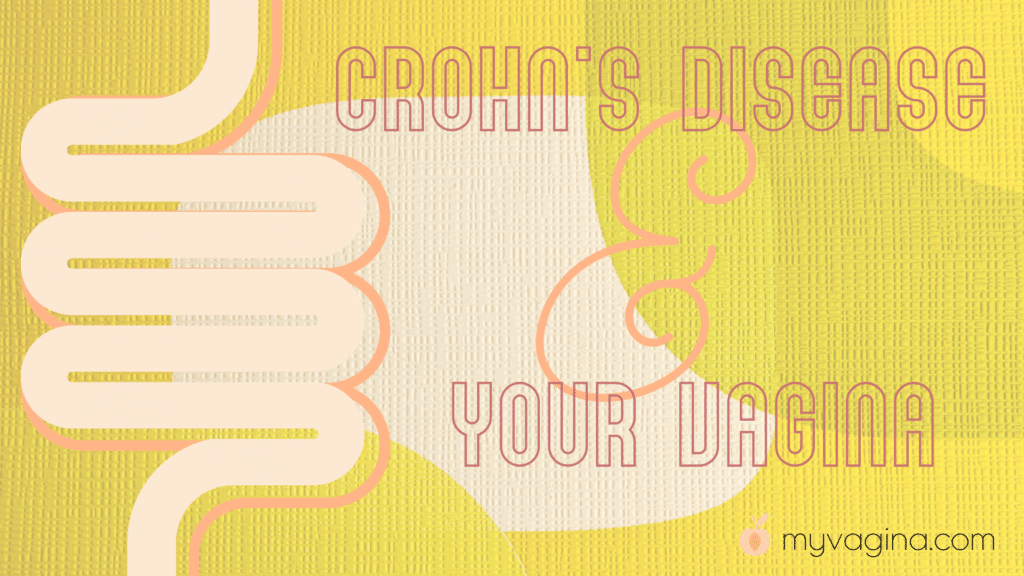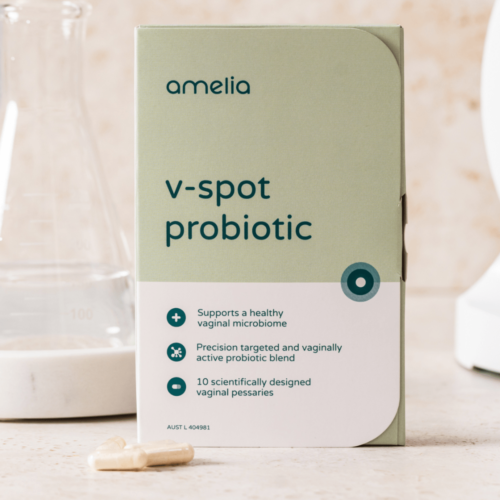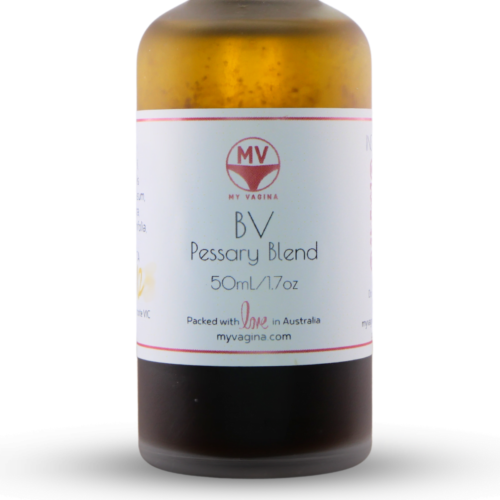Crohn’s disease is an inflammatory disease of the intestine, with the most common presentation being abdominal pain, cramping and diarrhoea.
Between 20 and 40 per cent of people with Crohn’s also have other manifestations of disease around the eyes, skin, joints, vagina and vulva.
Vulvovaginal symptoms are usually not addressed or recognised and may be difficult to treat.
Symptoms of gynaecological involvement in Crohn’s disease
These may present (even before a formal diagnosis of Crohn’s) as:
- Bartholin gland abscesses
- Fistulas of the vagina, uterus, ovaries, perineum and vulva
- Genital ulcers
- Other dermatological skin conditions of the vulva, perineum, labia or vagina
- Malnutrition can cause secondary impacts such as poor wound healing
Fistulas may cause:
- Increased urinary frequency
- Painful urination (dysuria)
- Air escaping from the urethra (pneumaturia)
- Pain above the pubic bone
- Faecal matter escaping through the vagina (faecal vaginal discharge or faecal gas expulsion through the vagina)
Diagnosis of Crohn’s disease and associated vulvovaginal issues
The combination of physicians approached for help with a tricky combination of problems can complicate effective treatment. A visit to a gynaecology or genitourinary department, when the gastrointestinal department seems more appropriate, can delay diagnosis.
Diagnosis of the vulvovaginal region can be very difficult due to the mess Crohn’s can make. Masses, ulcerations, vulvar tissue loss or lesions are difficult to spot and diagnose, and almost half of women with Crohn’s have menstrual irregularities.
Causes of Crohn’s disease and associated vulvovaginal issues
The cause of Crohn’s disease is unknown.
Gynaecological symptoms of Crohn’s are linked with vaginal birth and episiotomy (a cut made between the vagina and anus to let the baby out).
Anyone with the development of fistulas after birth should have Crohn’s considered.
Treatment and management of Crohn’s disease and associated vulvovaginal issues
Medical treatments for Crohn’s disease typically consist of antibiotics, steroids (both topical and systemic), and immune suppressants.
A trial was completed in 1998 on an anti-tumour medication, infliximab (Remicade), and was approved for use in severe Crohn’s disease. Infliximab works well for some types of fistulas.
Confusion may arise in diagnosis with tuberculosis, actinomycosis, lymphogranuloma venereum or cancerous lesions.
Crohn’s associated lesions can look identical to genital herpes.
Attempting to cut open and drain fistulas is heavily associated with tissue breakdown, recurrence, and delaying proper treatment. Surgery may be used as a treatment where appropriate.
Naturopathic approaches to understanding a patient’s manifestation of Crohn’s disease is likely to include:
- Full diet analysis to identify food intolerances (hydrogen and methane breath tests) and allergies
- Stool tests to understand bowel microbiota
- Diet modifications to improve symptoms, reduce inflammation, prevent malnutrition and improve absorbability of any medications
- Evidence is available for supplements, including omega-3 fatty acids, probiotics, iron, vitamin B12, folic acid, calcium, vitamin D, magnesium, and vitamin A
- Herbal medicines – anti-inflammatory, mucoprotective, antioxidant, immune-modulating, haemostatic and astringent
- Stress management
- Lifestyle adjustments as necessary (smoking, exercise)
The connection between menstrual abnormalities and Crohn’s disease
A loss of periods (amenorrhoea), irregular periods, painful periods and heavy bleeding have been reported in conjunction with Crohn’s disease. The causes of these irregularities are suspected to be poor nutrition, the effect of chronic disease and medicines.
Non-steroidal anti-inflammatories (NSAIDs) are commonly used to treat period pain, but can exacerbate inflammatory bowel disease. These pains can be indistinguishable from one another.
The relationship of the menstrual cycle with bowel complaints can change during the menstrual cycle, with worse abdominal pains and diarrhoea during premenstrual and menstrual days of the cycle.
Several problems can co-exist, so it’s important to be clear about what disease is causing what symptoms so that issues are not overlooked based on assumptions.
Sometimes Crohn’s can cause lesions to form on the fallopian tubes or ovaries, causing pelvic pain or a mass. Crohn’s can also masquerade as pelvic inflammatory disease (PID), endometriosis, intestinal inflammation, appendicitis, diverticulitis or ovarian diseases.
Crohn’s disease in children and adolescents
The pelvis can be involved in Crohn’s even in younger people. While children are less likely than adults to have fistulas, faecal incontinence or perineal disease, this should always be checked.
Gynaecological examinations should be performed on children and adolescents as appropriate.
The psychological impact of Crohn’s disease
Crohn’s disease with pelvic involvement can cause problems with sex, with pain a common feature due to abscesses and fistulas.
Pressure on the rectum during intercourse can cause pain, but more frightening is the thought of the bowels spontaneously emptying themselves during the act.
Crohn’s can cause major embarrassment, poor body image, and the deep, worrisome burden of chronic disease. Health problems constantly arise from malnutrition, medication side effects and pain from diarrhoea and the bowel.
The vagina can also be shifted anatomically, causing problems with heavy discharge. If the bowel is destroyed, altered or damaged, the sphincters and bowel may not be able to hold faecal matter adequately, causing incontinence.
Every person with Crohn’s will have outcomes that look a little different, so having a Crohn’s-savvy naturopath and medical specialist working together can make for an excellent team with good results.
Getting support from some favourite practitioners is advisable, which may include a massage therapist, acupuncturist or osteopath.
Counselling may be an integral part of treating a person with Crohn’s disease. Having emotional support for sometimes incredibly traumatic physical events is essential.
Crohn’s can be very hard on families, relationships, and the ability to live a normal and full life.
What to talk to your doctor about
If you suspect Crohn’s or have a diagnosis, you need to make sure that you are being treated by people who understand the gynaecological elements of your illness.
Unfortunately, you may need to see a few specialists to get the breadth of care that you need, since each practitioner tends to be a specialist only in their own body system – gut, vagina etc.
Don’t expect your experts to be experts in everything, and make sure you ask about what can be embarrassing symptoms that seem unrelated – they may be related, and they need attention.
References1–12
- 1.Vettraino IM, Merritt DF. Crohnʼs Disease of the Vulva. The American Journal of Dermatopathology. Published online August 1995:410-413. doi:10.1097/00000372-199508000-00020
- 2.Bhoyrul B, Lyon C. Crohn’s disease of the vulva: A prospective study. Journal of Gastroenterology and Hepatology. Published online June 27, 2018:1969-1974. doi:10.1111/jgh.14291
- 3.Barret M, de Parades V, Battistella M, Sokol H, Lemarchand N, Marteau P. Crohn’s disease of the vulva. Journal of Crohn’s and Colitis. Published online July 2014:563-570. doi:10.1016/j.crohns.2013.10.009
- 4.Foo WC, Papalas JA, Robboy SJ, Selim MA. Vulvar Manifestations of Crohn’s Disease. The American Journal of Dermatopathology. Published online August 2011:588-593. doi:10.1097/dad.0b013e31820a2635
- 5.Cho JM, Loftus EV, Bruining DH, et al. Vulvar Crohn’s Disease: Clinical Features and Outcomes. Am J Gastroenterol. Published online September 9, 2021:2296-2299. doi:10.14309/ajg.0000000000001502
- 6.Wells LE, Cohen D. Delayed Diagnosis of Vulvar Crohn’s Disease in a Patient with No Gastrointestinal Symptoms. Case Rep Dermatol. Published online November 28, 2018:263-267. doi:10.1159/000495000
- 7.Abboud ME, Frasure SE. Vulvar inflammation as a manifestation of Crohn’s disease. World Journal of Emergency Medicine. Published online 2017:305. doi:10.5847/wjem.j.1920-8642.2017.04.011
- 8.Girszyn N, Leport J, Arnaud L, Kahn JE, Piette AM, Bletry O. Maladie de Crohn à expression vulvopérinéale exclusive. La Presse Médicale. Published online December 2007:1762-1765. doi:10.1016/j.lpm.2007.02.037
- 9.Leu S, Sun PK, Collyer J, et al. Clinical Spectrum of Vulva Metastatic Crohn’s Disease. Dig Dis Sci. Published online May 7, 2009:1565-1571. doi:10.1007/s10620-008-0448-y
- 10.Maconi G, Ardizzone S, Greco S, Radice E, Bezzio C, Bianchi Porro G. Transperineal Ultrasound in the Detection of Perianal and Rectovaginal Fistulae in Crohn’s Disease. Am J Gastroenterology. Published online October 2007:2214-2219. doi:10.1111/j.1572-0241.2007.01441.x
- 11.Matsuo K, Chi DS, Eno ML, Im DD, Rosenshein NB. Vulvar Mucinous Adenocarcinoma Associated with Crohn’s Disease: Report of Two Cases. Gynecol Obstet Invest. Published online 2009:276-278. doi:10.1159/000245742
- 12.Günthert AR, Hinney B, Neßelhut K, Hanf V, Emons G. Vulvitis granulomatosa and unilateral hypertrophy of the vulva related to Crohn’s disease: A case report. American Journal of Obstetrics and Gynecology. Published online November 2004:1719-1720. doi:10.1016/j.ajog.2004.03.013
Specially formulated probiotic for vaginal application to promote a healthy vaginal microbiome.
Unique, comprehensive BV, AV and 'mystery bad vag' treatment guide, one-of-a-kind system, with effective, innovative treatments.






